From Gilbert Baker to Amber Hikes: The History of the Pride Flag
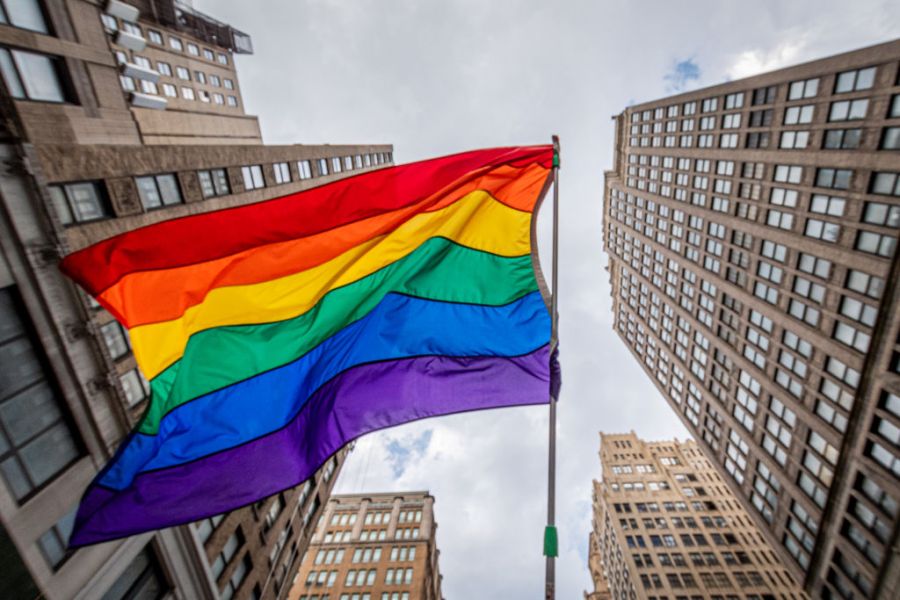
Each year in June, the LGBTQ+ community celebrates Pride Month, honoring the riots against discrimination and police brutality that occurred throughout the country before coming to a head at the Stonewall Inn on June 28, 1969. While commemorating this fight for justice and equality, Pride Month also recognizes all of the great achievements and positive impacts that the LGBTQ+ community has had throughout the world.
With its array of vibrant colors that resemble a rainbow, the Pride flag is boldly and joyfully visible at Pride events and protests and throughout the month of June as a major symbol of solidarity, acceptance, hope, and love for the LGBTQ+ community. But it’s also become an enduring, year-round symbol of unity and identity.
Though it’s colorful, bright, and impossible to ignore, there is also great significance behind the design of the flag and the variations created over the years. Through media and businesses both big and small, great strides have been made to properly represent the LGBTQ+ community over the past few years. With that said, let’s dive into the history of this important flag that represents a vital community.
Representation Gets a Fresh Start
The official Pride flag was created in 1978 by Gilbert Baker, a gay artist, and activist who lived in San Francisco and had been tasked by politician Harvey Milk to create a positive symbol for the gay community. Milk had been elected to the San Francisco Board of Supervisors a year prior, becoming one of the first openly gay people to hold this type of visible and influential public position in a major American city.
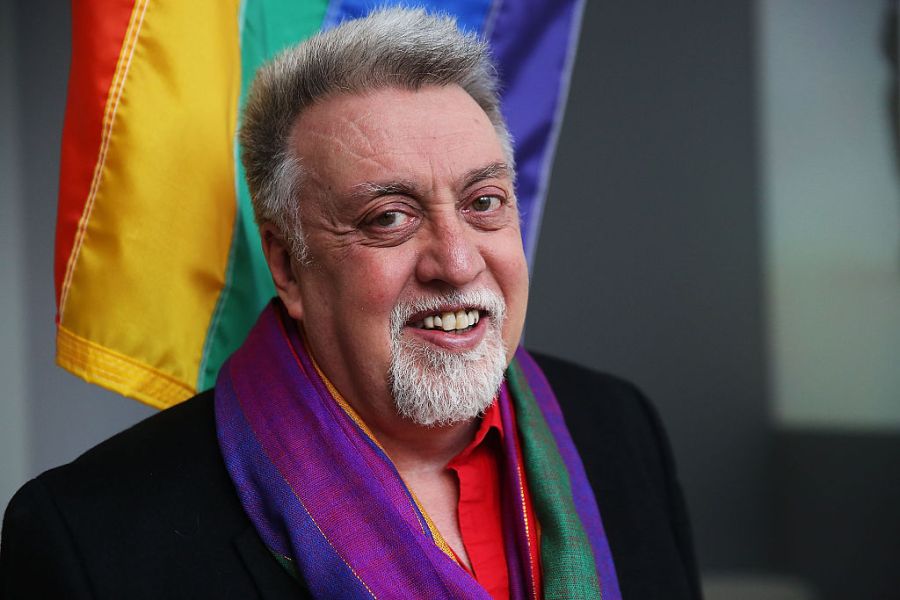
The new flag was intended in part to replace the negative imagery around the pink triangle, which Nazis had used to identify and persecute gay people. Though the LGBTQ+ community had reclaimed the pink triangle as their own as a symbol of remembrance and a reminder of taking action against discrimination, Milk believed that there needed to be a better symbol — something new with roots in positivity and pride, not one of the darkest times in recent history. Baker put his creativity (and expert sewing skills) to work and began developing something that would impact the community forever.
A Powerfully Symbolic Design Comes to Life
Only 27 years old at the time, Baker’s beautiful rainbow was inspired by the symbolism behind the American flag. The United States celebrated its bicentennial in 1976, and the U.S. flag was spotted everywhere from porches to articles of clothing. “It really put the seed in my head. I was like: ‘Wait a minute, we are a global tribe, and a flag really fits our mission,'” the artist said in a 2015 interview with CNN. The presence of the ubiquitous stars and stripes everywhere impressed upon Baker the need for a similar “rallying sign” for the LGBTQ+ community.
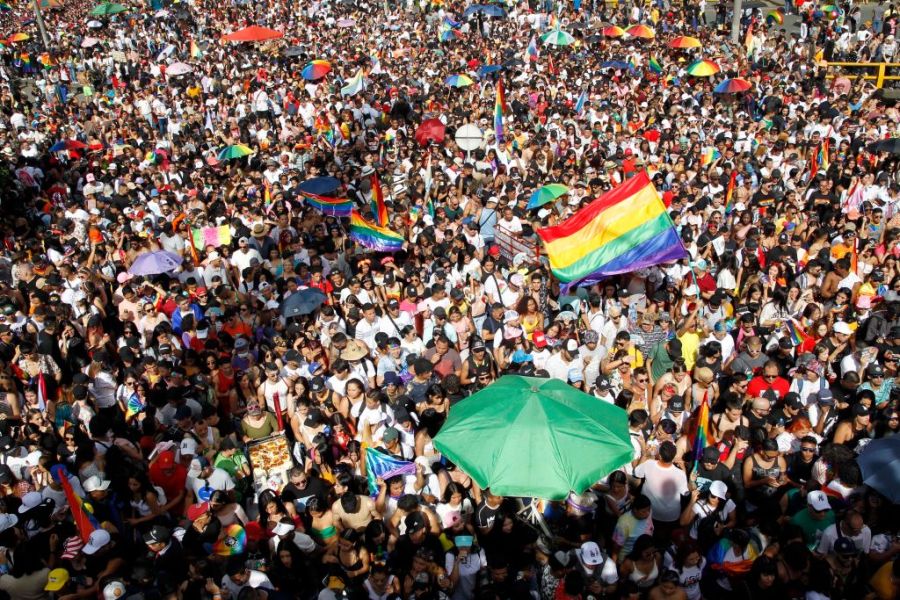
Baker decided to create a flag of colorful stripes, with each hue representing a distinct, important characteristic. The original design of this rainbow flag had eight stripes: Pink stood for sexuality, red for life, orange for healing, yellow for the sun, green for nature, turquoise for art, indigo for harmony/serenity, and purple for spirit.
The very first flag was 30 feet wide by 60 feet long and was hoisted into the air for the Gay Freedom Day Parade on June 25, 1978 –– a day Baker would never forget. “It completely astounded me that people just got it, in an instant like a bolt of lightning – that this was their flag. It belonged to all of us,” he said. “It was the most thrilling moment of my life. Because I knew right then that this was the most important thing I would ever do – that my whole life was going to be about the Rainbow Flag.”
The World Takes Notice of the Iconic Symbol
Baker was soon asked to mass-produce the flag for distribution, but because of expenses and the fact that some colors of fabric were unavailable, the pink and turquoise stripes were eventually removed. This left the standard six-striped flag that we know today, which incorporates red, orange, yellow, green, blue, and violet stripes.
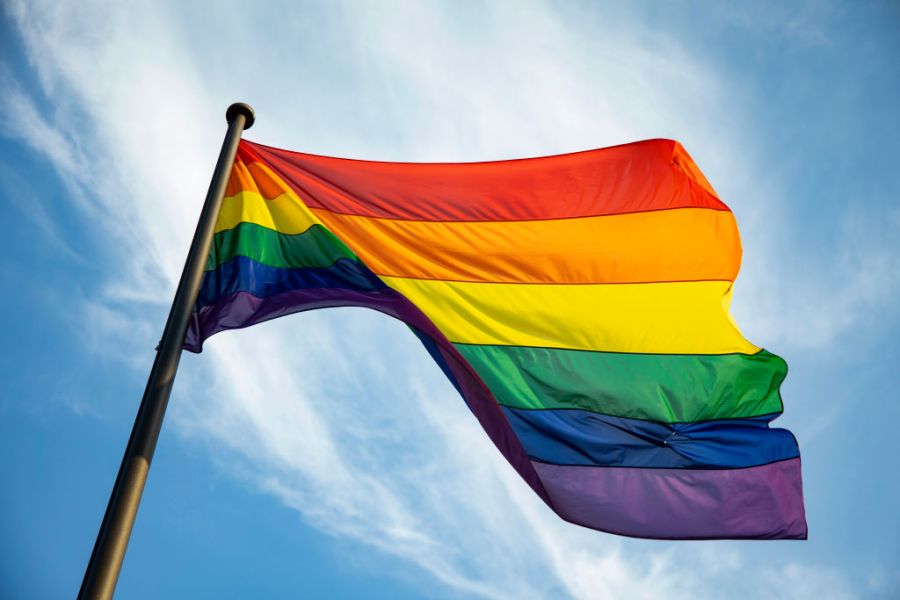
The flag’s visibility increased further following Harvey Milk’s assassination in late 1978. As grief and outrage shocked the community, local leaders made the decision to fly the flag from light poles all along Market Street, which ran through San Francisco’s Castro neighborhood. In this area, Milk first began his activism and leadership. As it became more widely available, the flag was soon spotted outside various homes and businesses in the area and was featured on keychains, T-shirts, bumper stickers, and other merchandise.
In 1994, Baker made a move that solidified the rainbow flag as a symbol of LGBTQ+ pride. In honor of the 25th anniversary of the Stonewall riots, the artist created a mile-long version of the flag that was dubbed “Raise the Rainbow.” It was later confirmed by the Guinness Book of World Records as the world’s largest flag. After this historic, meaningful moment, large sections of the material were given to community activists and used in different pride parades and marches worldwide. The rainbow flag became the official Pride flag for the LGBTQ+ community globally.
New Flags Honor Identities With Colorful Inspiration
Though the Pride flag represents the entire LGBTQ+ community, various multi-color striped flags have been created to designate different identities within the community. This includes the bisexual Pride flag, which has a broad magenta stripe at the top, a broad stripe in blue at the bottom, and a narrower deep lavender band in the middle, as well as the transgender Pride flag, pictured here with two light blue stripes, two pink stripes and a white stripe in the center.
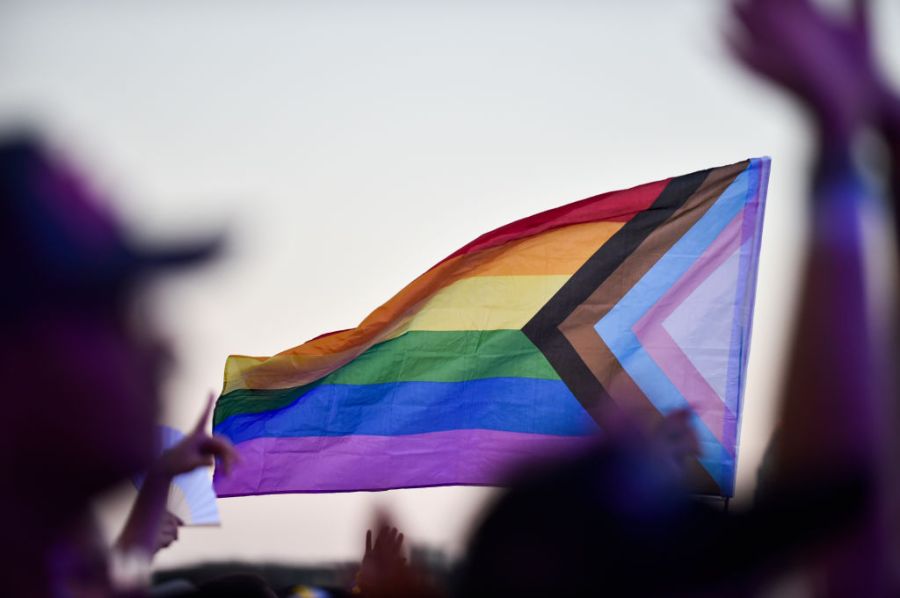
Even Baker created different variations of the flag over the years to reflect the shifting dynamics of the community and help this fluid symbol become even more inclusive. In March of 2017, he created a nine-stripe version of his original 1977 flag that incorporated red, orange, yellow, green, violet, pink, turquoise, and indigo stripes, along with a new color: lavender. According to Baker, the lavender stripe symbolized diversity. Sadly, Baker passed away later that same month — but his original idea has endured and morphed to represent acceptance on an even broader level.
Amber Hikes Introduces an Even More Inclusive Design
Another new Pride Flag was introduced in recent years thanks to civil rights activist Amber Hikes, a queer Black woman. Hikes entered the city government in Philadelphia after reports of racism within the city’s LGBTQ+ community, galvanized by the injustice and determined to assist people of color within her own community. After being appointed as Executive Director of Philadelphia’s Office of LGBT Affairs, she created the More Pride, More Color campaign in June 2017. This initiative worked to develop a version of the Pride flag with black and brown stripes at the top to represent LGBTQ+ people of color within the community. The flag garnered a lot of attention worldwide, and many people received the flag well — including writer and actress Lena Waithe, who wore the flag to the Met Gala in 2018.
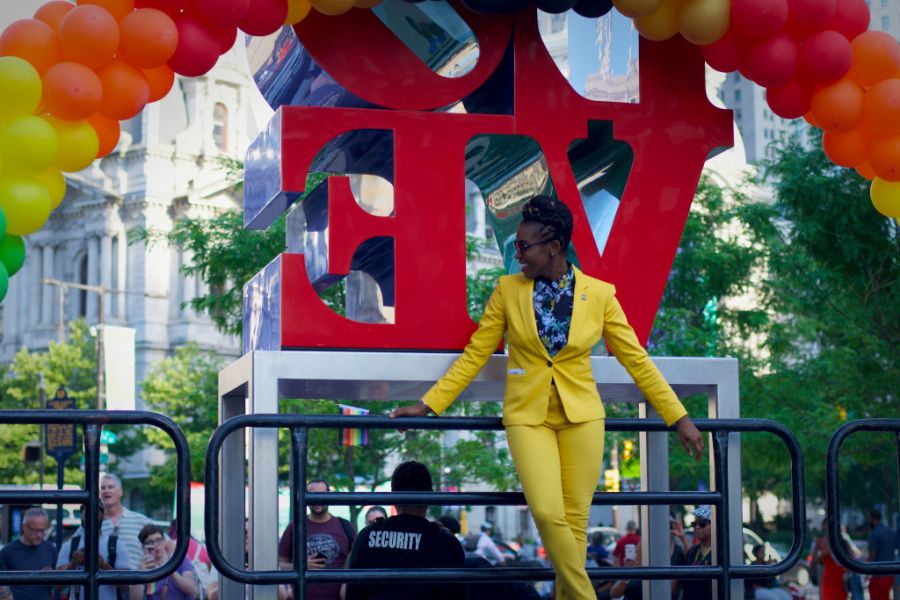
In all of its iterations, the Pride flag remains a powerful global symbol for the LGBTQ+ community over 40 years after Gilbert Baker created the first design. And, most importantly, the community it represents is standing strong in solidarity.





